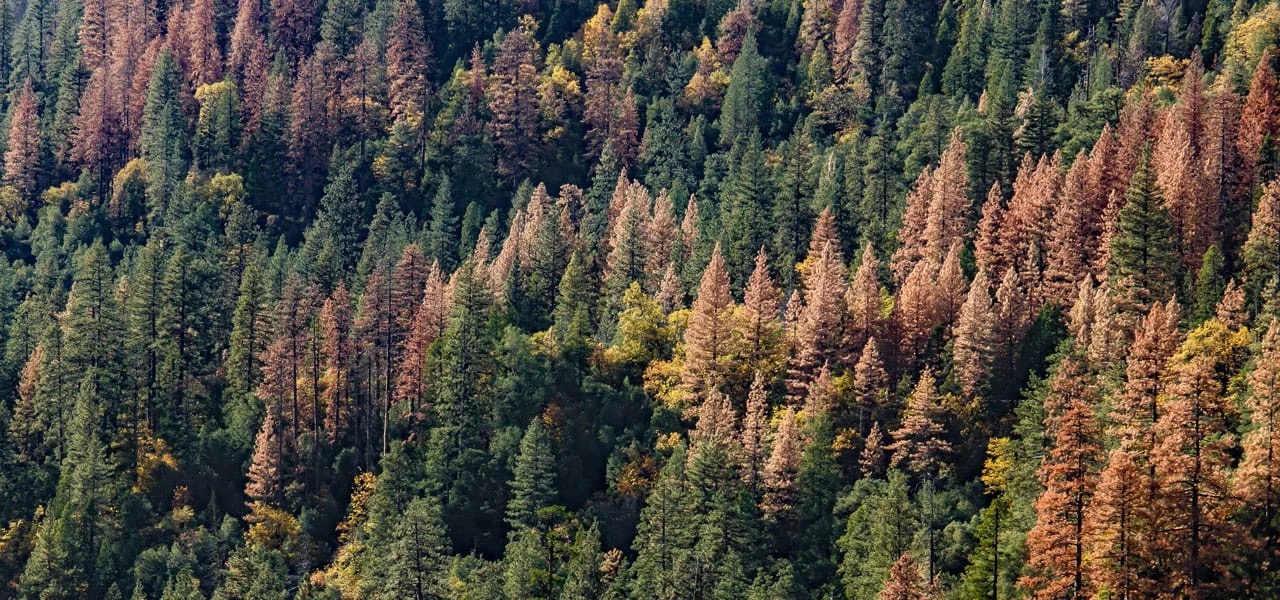Cooley spruce galls are common in Colorado and are often seen on blue spruce.
The Cooley spruce gall looks a little like a 2- to 4-inch long prickly cucumber. It’s usually found on the end of spruce tree branches (on the new growth) where it starts out a light green color in late spring and early summer, and then dries out and turns brown in July.
But while they may look alarming, Cooley spruce galls actually do little or no damage to the tree. In most cases, old galls are covered by new growth the following season and become almost unnoticeable within a few years. There’s no need to remove the galls.
What Causes Cooley Spruce Galls?
 Cooley spruce galls are caused by a small aphid-like insect called the Cooley spruce gall adelgid or Cooley spruce gall wooly aphid.
Cooley spruce galls are caused by a small aphid-like insect called the Cooley spruce gall adelgid or Cooley spruce gall wooly aphid.
In spring, female adelgids lay hundreds of eggs on new buds near the branch tips of spruce trees. As the buds open, the eggs hatch and the young nymphs start feeding on the growing needles. Their saliva enters the tree and causes a reaction that swells up the tissues to create galls.
For the rest of spring and into early summer, the young adelgids live inside the galls and continue to feed on the tree. As summer progresses the galls dry out, and the adelgids mature and emerge to fly away.
Where do they go? They fly to Douglas firs (that’s right – they don’t go to another spruce tree) where they lay eggs on the needles. When the eggs hatch, the new generation of adelgids feeds on the Douglas fir, causing needle damage and yellow spots but no galls.
Late in summer some of the adelgids develop wings and fly back to the spruce tree to lay eggs which produce the population of females that overwinter on the spruce and lay a new batch of eggs in spring, starting the cycle all over again.
Controlling Cooley Spruce Gall Adelgids
First, because the Cooley spruce gall adelgid needs two hosts – a spruce and a Douglas fir – avoid planting those two trees close together.
Infestations are common and rarely cause significant or lasting damage to the spruce tree so treatment is not always necessary. But if the unsightly galls are detracting from the appearance of your spruce tree, or if you have an extremely heavy infestation, treatment is possible.
The key is to begin treatment before galls begin to form. Once the adelgids are inside the galls, insecticides usually have little effect.
We spray spruce trees in spring before new growth starts (typically in late April), and again in fall to prevent new galls from forming.
So if you notice strange brown tips on your spruce trees, give us a call. We’re happy to inspect your trees and determine whether or not treatment is needed.



